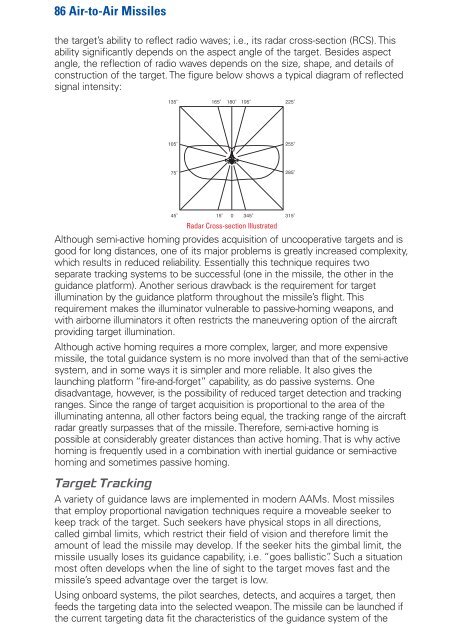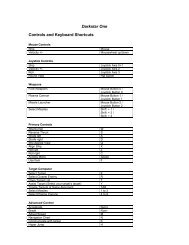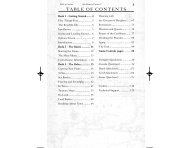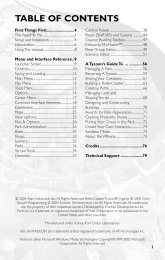Heads-Up Display Modes 35 - Metaboli
Heads-Up Display Modes 35 - Metaboli
Heads-Up Display Modes 35 - Metaboli
You also want an ePaper? Increase the reach of your titles
YUMPU automatically turns print PDFs into web optimized ePapers that Google loves.
86 Air-to-Air Missiles<br />
the target’s ability to reflect radio waves; i.e., its radar cross-section (RCS). This<br />
ability significantly depends on the aspect angle of the target. Besides aspect<br />
angle, the reflection of radio waves depends on the size, shape, and details of<br />
construction of the target. The figure below shows a typical diagram of reflected<br />
signal intensity:<br />
Radar Cross-section Illustrated<br />
Although semi-active homing provides acquisition of uncooperative targets and is<br />
good for long distances, one of its major problems is greatly increased complexity,<br />
which results in reduced reliability. Essentially this technique requires two<br />
separate tracking systems to be successful (one in the missile, the other in the<br />
guidance platform). Another serious drawback is the requirement for target<br />
illumination by the guidance platform throughout the missile’s flight. This<br />
requirement makes the illuminator vulnerable to passive-homing weapons, and<br />
with airborne illuminators it often restricts the maneuvering option of the aircraft<br />
providing target illumination.<br />
Although active homing requires a more complex, larger, and more expensive<br />
missile, the total guidance system is no more involved than that of the semi-active<br />
system, and in some ways it is simpler and more reliable. It also gives the<br />
launching platform “fire-and-forget” capability, as do passive systems. One<br />
disadvantage, however, is the possibility of reduced target detection and tracking<br />
ranges. Since the range of target acquisition is proportional to the area of the<br />
illuminating antenna, all other factors being equal, the tracking range of the aircraft<br />
radar greatly surpasses that of the missile. Therefore, semi-active homing is<br />
possible at considerably greater distances than active homing. That is why active<br />
homing is frequently used in a combination with inertial guidance or semi-active<br />
homing and sometimes passive homing.<br />
Target Tracking<br />
A variety of guidance laws are implemented in modern AAMs. Most missiles<br />
that employ proportional navigation techniques require a moveable seeker to<br />
keep track of the target. Such seekers have physical stops in all directions,<br />
called gimbal limits, which restrict their field of vision and therefore limit the<br />
amount of lead the missile may develop. If the seeker hits the gimbal limit, the<br />
missile usually loses its guidance capability, i.e. “goes ballistic”. Such a situation<br />
most often develops when the line of sight to the target moves fast and the<br />
missile’s speed advantage over the target is low.<br />
Using onboard systems, the pilot searches, detects, and acquires a target, then<br />
feeds the targeting data into the selected weapon. The missile can be launched if<br />
the current targeting data fit the characteristics of the guidance system of the















